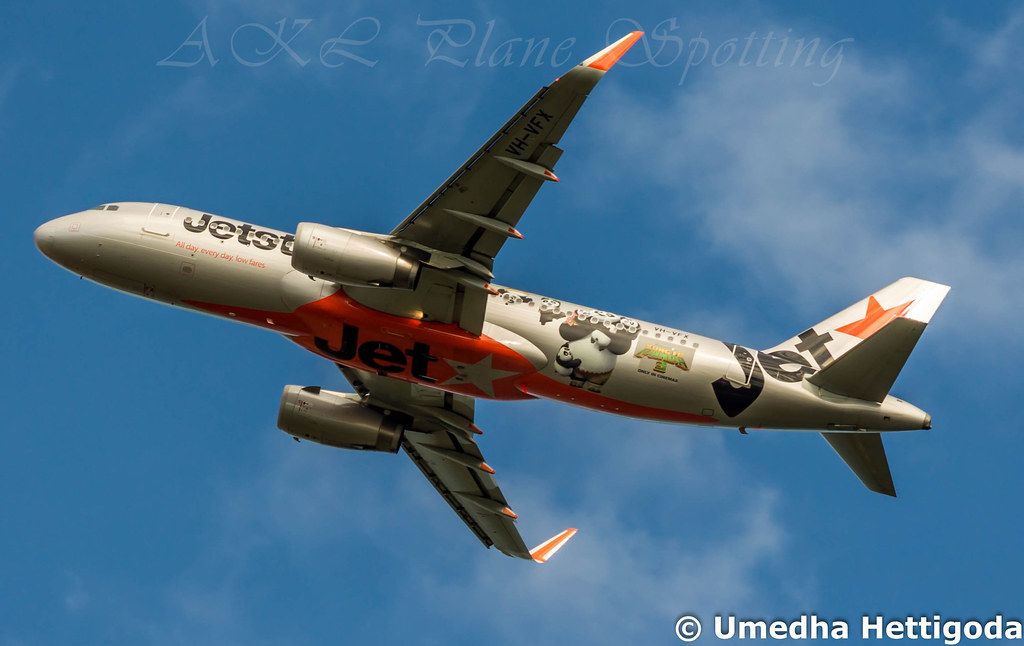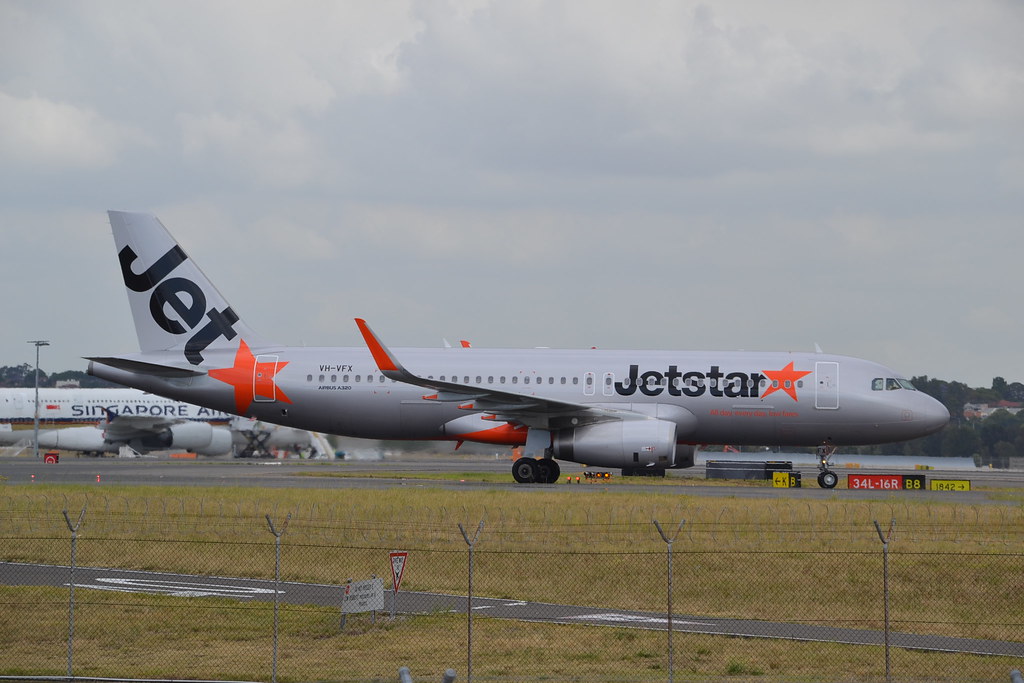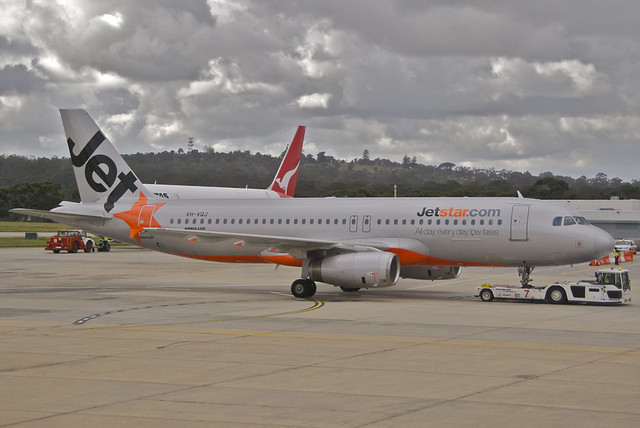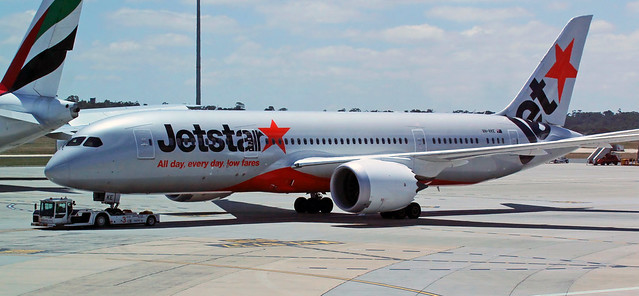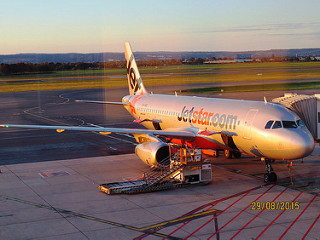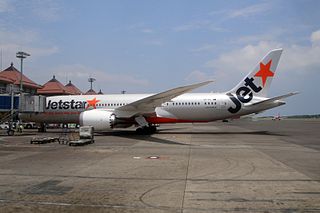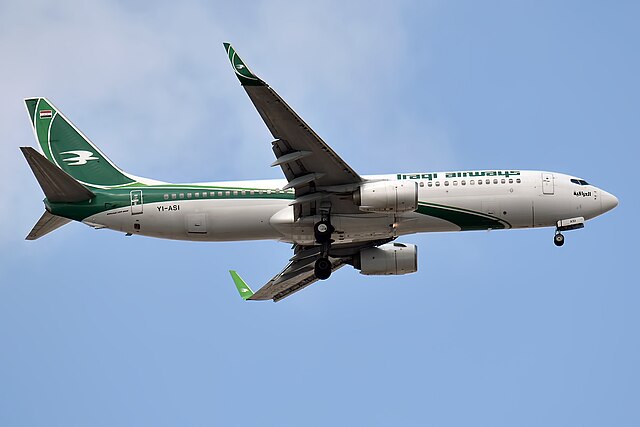Jetstar A320 at Sydney on Sep 29th 2018, wrong speeds, gear not retracted, flaps overspeed on departure
Last Update: February 24, 2020 / 18:22:58 GMT/Zulu time
Incident Facts
Date of incident
Sep 29, 2018
Classification
Report
Airline
Jetstar Airways
Flight number
JQ-529
Departure
Sydney, Australia
Destination
Melbourne, Australia
Aircraft Registration
VH-VFX
Aircraft Type
Airbus A320
ICAO Type Designator
A320
The ATSB released their final report releasing following findings:
- The flight crew did not follow standard operating procedures to verify and update Flysmart database during sign on for the day.
- When using manual calculations to obtain performance speeds, the flight crew made an error which was not detected by independent validation. This resulted in a calculated rotation speed based on an aircraft weight significantly heavier than the actual take-off weight.
- The rotation rate commanded by the pilot flying was too low to prevent a flap overspeed, given the incorrect performance speeds and use of maximum take-off thrust.
- In an attempt to manage the airspeed, the pilot flying reduced the thrust from the take-off setting, rather than increasing the pitch, but the aircraft was below the safe altitude above the ground to do so.
- The landing gear was not retracted at the normal phase of the take-off.When the flight crew identified that the landing gear was still extended, they retracted it immediately, even though the aircraft was above the maximum landing gear retraction speed.
The ATSB reported the captain was pilot flying, the first officer was pilot monitoring.
The ATSB analysed:
Electronic flight bag
The flight crew did not have the same database versions on their electronic flight bags (EFB). The standard operating procedures required the version to be checked at sign-on each day. Had this been completed the databases on the flight crew’s EFBs would have been the same and the current database. Although the operator reported that the discrepancy should not have made a difference to the performance results obtained for this flight, had both databases been up to date, it is more likely the crew would have considered the source of the discrepancy between the two EFBs was related to something else, such as a data entry, and resolved the discrepancy.
Manual calculations of performance speeds
Instead of using the one serviceable EFB, the crew reverted to the manual take-off charts to calculate the performance speeds, a procedure rarely practiced by the crew. When using the manual performance tables to derive take-off speeds, it was unlikely the flight crew completed the full procedure for the manual calculation. The instruction to move down the ‘wind column’ appears at the top of the second page of instructions. It was likely that this step, and subsequent steps, were overlooked, resulting in performance speeds for the maximum regulated take-off weight (RTOW) being used.
The ATSB could not establish whether both of the flight crew independently made the same calculation error or if the results were not independently validated by the pilot flying (PF). Either way, the error by the pilot monitoring (PM) was not detected by the PF.
Rotation and flap overspeed
The actual rotation speed of 169 kt was only 16 kt below the maximum flap extended speed (185 kt), 41 kt closer than the correct rotation speed would have been. The PF rotated the aircraft at a rate significantly below the recommended rate of 3°/s. This resulted in the aircraft attitude reaching 10.5° pitch-up, instead of 15°, 5 seconds after rotation when the maximum flap extended speed was exceeded. The pitch attitude reached 15°; 11 seconds after rotation.
It is likely that the SRS was indicating guidance to the PF to increase the pitch, which, had the PF followed, would have reduced the aircraft acceleration. According to the simulation conducted by Airbus, if a 3°/s pitch rate had been achieved, the flap overspeed would not have occurred.
The PM did not bring to the attention of the PF the incorrect pitch attitude at take-off. Had the PM called ‘pitch’ it may have prompted the PF to increase the pitch. Jetstar stated this call was not specifically published, like many calls a PM would need to make to identify an incorrect control input.
Thrust management
When the PM called ‘speed, speed’, the PF reduced the engine power in response, as opposed to increasing the aircraft pitch. The thrust reduction occurred below the thrust reduction altitude and therefore had the potential to affect safety of the flight.
Landing gear retraction overspeed event
The retraction of the landing gear was not performed when positive climb was achieved. While troubleshooting a buffeting sound, the PF found that the landing gear was still extended and called ‘gear up’. The PM immediately retracted the landing gear without checking the aircraft’s actual airspeed relative to the maximum landing gear retraction speed. This resulted in an overspeed event when the landing gear was retracted beyond the maximum landing retraction speed. The correct procedure was to reduce the aircraft’s speed below the maximum landing gear speed before retracting the landing gear. There is no aircraft warning associated with this event.
Incident Facts
Date of incident
Sep 29, 2018
Classification
Report
Airline
Jetstar Airways
Flight number
JQ-529
Departure
Sydney, Australia
Destination
Melbourne, Australia
Aircraft Registration
VH-VFX
Aircraft Type
Airbus A320
ICAO Type Designator
A320
This article is published under license from Avherald.com. © of text by Avherald.com.
Article source
You can read 2 more free articles without a subscription.
Subscribe now and continue reading without any limits!
Read unlimited articles and receive our daily update briefing. Gain better insights into what is happening in commercial aviation safety.
Send tip
Support AeroInside by sending a small tip amount.
Related articles
Jetstar A320 at Melbourne on Mar 16th 2024, rejected takeoff due to open communication hatch
A Jetstar Airbus A320-200, registration VH-VQJ performing flight JQ-739 from Melbourne,VI to Launceston,TA (Australia), was accelerating for takeoff…
Jetstar B788 near Guam on Sep 13th 2023, cracked windshield
A Jetstar Boeing 787-8, registration VH-VKE performing flight JQ-26 from Tokyo Narita (Japan) to Cairns,QL (Australia) with 220 people on board, was…
Jetstar A320 at Brisbane on May 23rd 2023, chemical smell on board
A Jetstar Airbus A320-200, registration VH-XNP performing flight JQ-904 from Brisbane,QL to Townsville,QL (Australia), was climbing out of Brisbane…
Jetstar A320 at Adelaide on Mar 24th 2023, hydraulic problem
A Jetstar Airbus A320-200, registration VH-VGU performing flight JQ-681 from Adelaide,SA to Hobart,TA (Australia), was enroute at FL350 about 170nm…
Jetstar B788 at ;Melbourne and Coolangatta on May 7th 2022, lightning strikes
A Jetstar Boeing 787-8, registration VH-VKL performing flight JQ-444 from Melbourne,VI to Coolangatta,QL (Australia), departed Melbourne's runway 34,…
Newest articles
Iraqi B738 at Tehran on May 1st 2024, landed on closed runway
An Iraqi Airways Boeing 737-800, registration YI-ASI performing flight IA-113 from Najaf (Iraq) to Tehran Imam Khomeini (Iran), was cleared to land…
SJL E135 at Lubumbashi on Mar 3rd 2023, runway overrun on landing
A SJL Aeronautica Embraer ERJ-135, registration D2-FIA performing a flight from Kinshasa to Lubumbashi (DR Congo) with 33 people on board, landed on…
Subscribe today
Are you researching aviation incidents? Get access to AeroInside Insights, unlimited read access and receive the daily newsletter.
Pick your plan and subscribePartner

A new way to document and demonstrate airworthiness compliance and aircraft value. Find out more.

ELITE Simulation Solutions is a leading global provider of Flight Simulation Training Devices, IFR training software as well as flight controls and related services. Find out more.

Your regulation partner, specialists in aviation safety and compliance; providing training, auditing, and consultancy services. Find out more.
AeroInside Blog
Popular aircraft
Airbus A320Boeing 737-800
Boeing 737-800 MAX
Popular airlines
American AirlinesUnited
Delta
Air Canada
Lufthansa
British Airways
